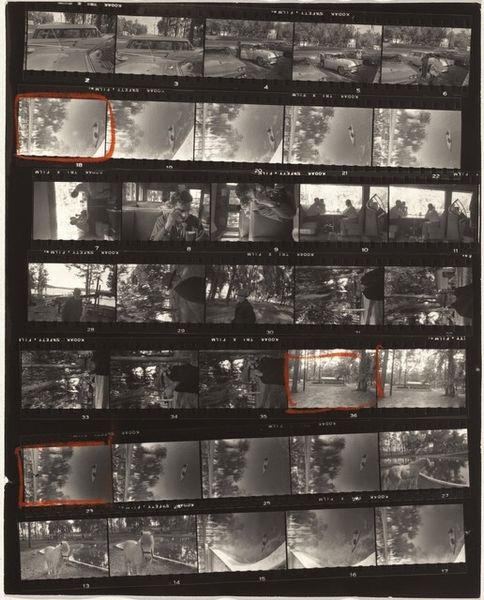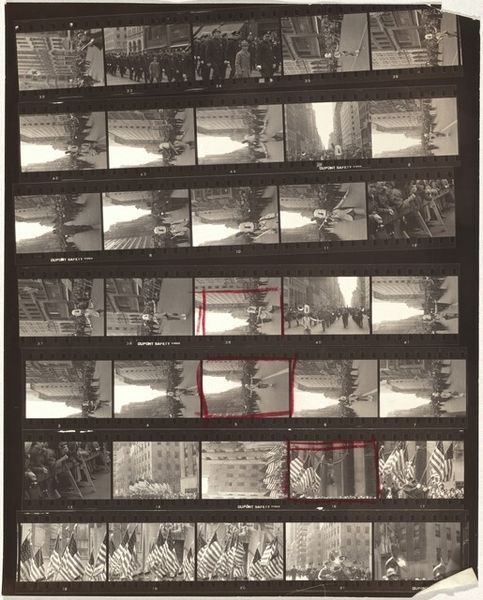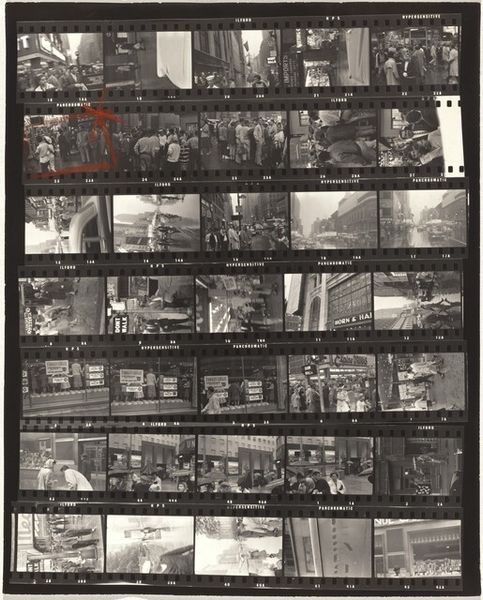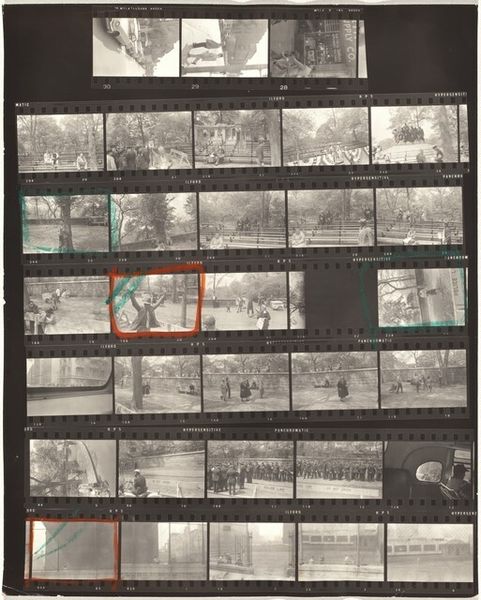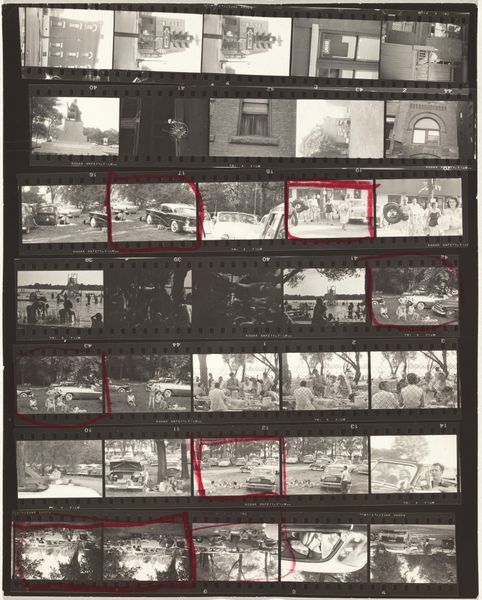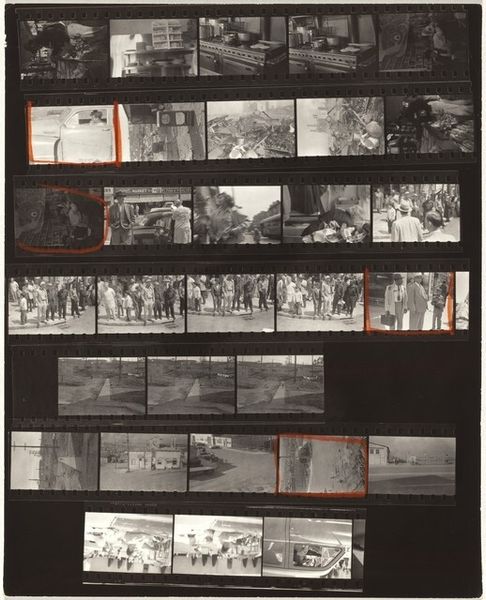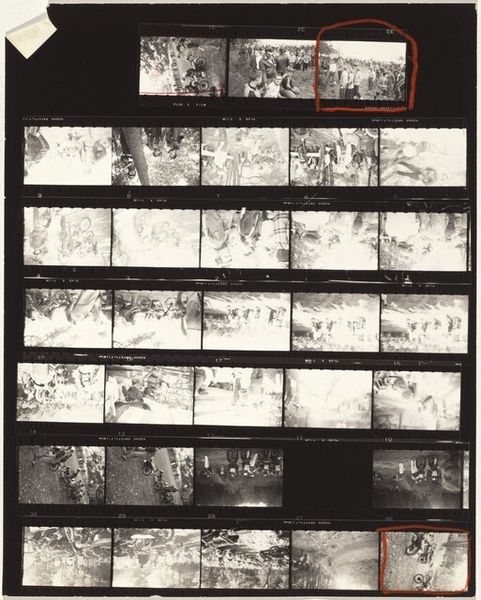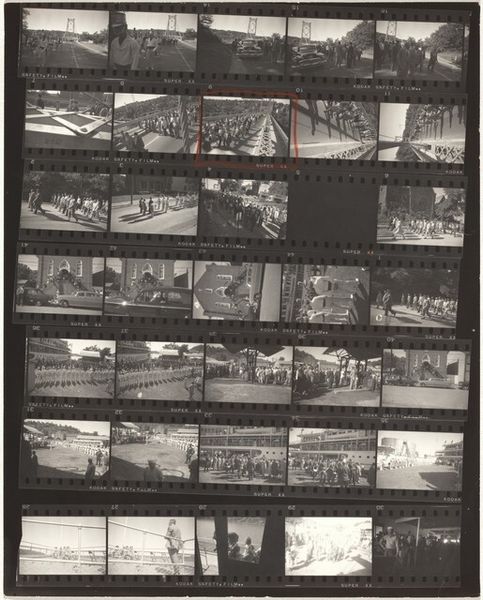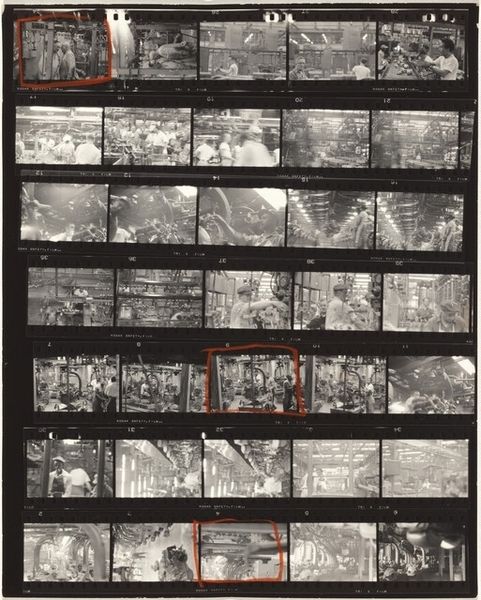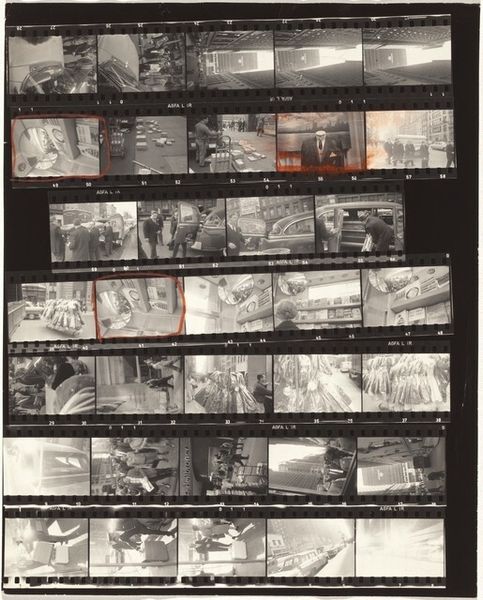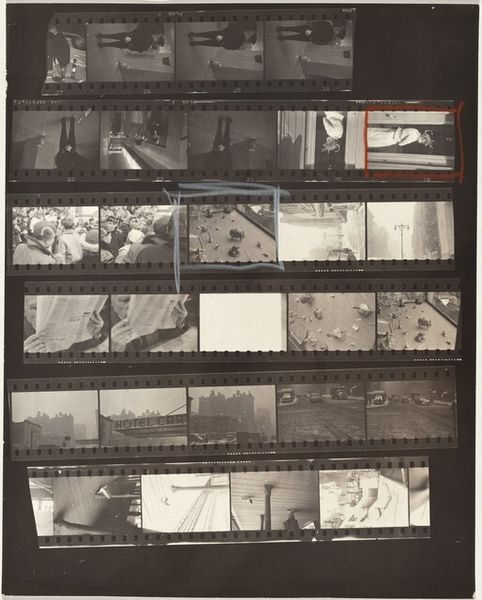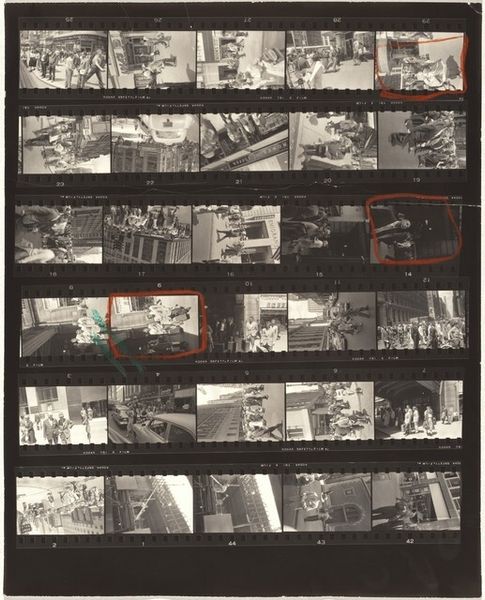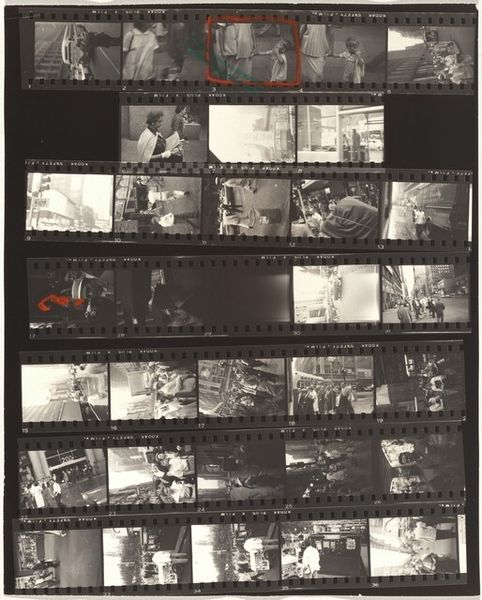
contact-print, photography
#
contact-print
#
street-photography
#
photography
#
pop-art
#
modernism
#
realism
Dimensions: overall: 25.3 x 20.3 cm (9 15/16 x 8 in.)
Copyright: National Gallery of Art: CC0 1.0
Curator: Here we have Robert Frank’s "Guggenheim 102/Ford 25--Detroit," a contact print from 1955. Editor: At first glance, I'm struck by the fragmented, almost chaotic presentation. It's not a singular, polished image, but rather a raw document of photographic labor. Curator: Precisely. Frank is presenting us with a series of images on a contact sheet, disrupting the conventional experience of the photograph. The frames, sprockets, and marginalia become integral parts of the composition. We see marked frames, an array of possible captures in assembly plants of automobile manufactory. Editor: Thinking about the Ford factory, I immediately consider the physical toil represented—the repetitive actions, the working conditions. The material here isn't just the photographic paper; it's the steel, rubber, and human sweat that went into building those cars. Curator: True, but Frank's choice to display this as a contact sheet asks us to consider the construction of meaning itself. Each frame offers a slightly different perspective, a varied interpretation of the same subject. How the photographer and his process creates this impression becomes apparent, and perhaps a meaning of its own. Editor: The images reveal the intense labor but are viewed indirectly, through the artist's hand, in its own fragmented way that draws our focus back on Frank. And in using a seemingly direct, 'unfiltered' document of a process, we also acknowledge how much labor it requires to simply manufacture an image! Curator: Ultimately, "Guggenheim 102/Ford 25--Detroit" complicates the traditional notions of photography, industrial work, and meaning by foregrounding structure and the act of looking itself. Editor: A truly insightful image that offers a window not only into Detroit's past, but also into the artist's own working method.
Comments
No comments
Be the first to comment and join the conversation on the ultimate creative platform.
